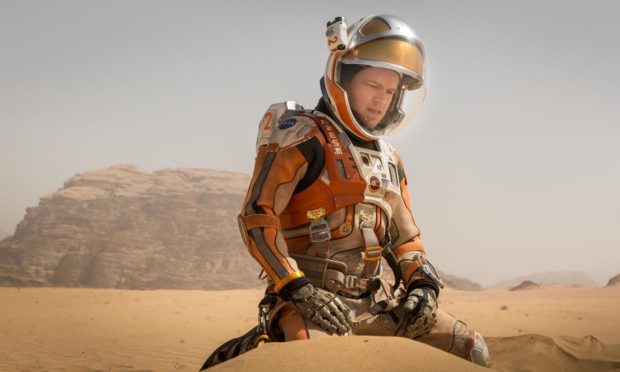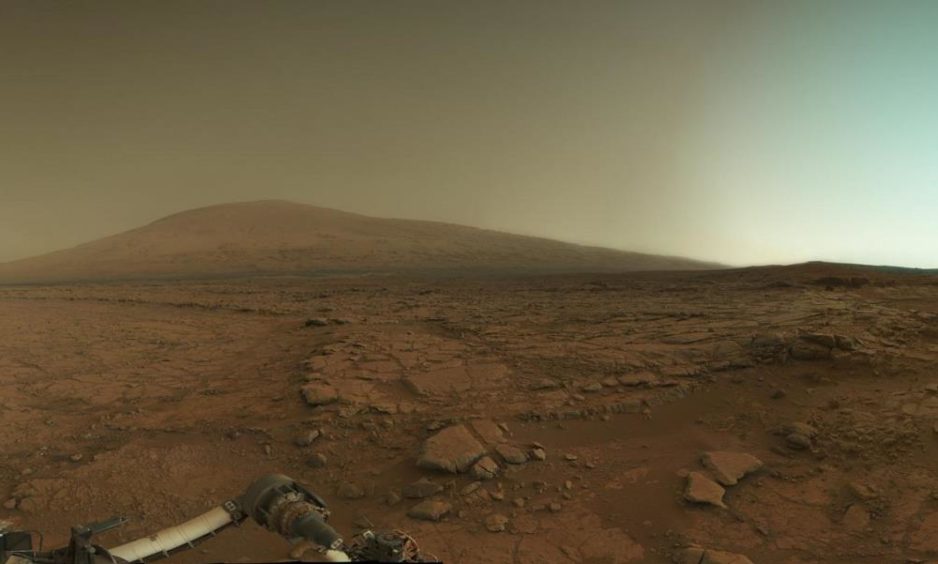When planetary scientists see films like The Martian – based on the story of an astronaut who becomes stranded on Mars – we struggle to suspend our knowledge and enjoy them merely as works of fiction.
But people’s views of space are heavily influenced by what they see in popular culture, rather than the reality of potential life on other planets. Though they may not always be very accurate, films and books have played a vital role in increasing public appetite for knowledge of the far-off places in our solar system.
The American author Andy Weir, on whose book The Martian was based, asked if I would read his novel in the interests of factual accuracy. He probably didn’t like most of my answers, as the first thing I pointed out was that the huge gale he so vividly described would not be possible in the thin atmosphere of Mars.
But I am a theoretical physicist and he is a writer with a great imagination. While I contributed where possible to enhance accuracy, a book based only on reality was never going to make bestseller lists, or be adapted into a box office movie hit.
Nonetheless, The Martian dramatically increased curiosity about Mars, awaking in society an interest in the kind of work I do with the Planetary Sciences Group.
How can Mars research help the Covid-19 effort?
I work as part of an interdisciplinary research team focused on the study of Earth and the other planets in our solar system, and the development of hardware to study them. Sometimes this research means we are involved in supporting missions to explore other planets, but it isn’t all about far-flung exploration.
Part of our role is to take the understanding gained in such missions and see how the technology and instruments used can be deployed much closer to home.
The search for life on Mars and the scientific response to Covid-19 are not worlds apart
Just weeks after we arrived in Aberdeen in 2020, we began to see the full seriousness of the Covid-19 pandemic. As a team, we were able to turn our expertise in controlled pressurised systems for space missions to build a ventilator (ATMO-Vent) for use in the fight against coronavirus.
Despite being based on space technology, the components are mass produced and so it is a cost-effective alternative. We have now signed a non-profitable agreement with a company in Rwanda to support the development of the ventilator in several African countries.
Our group has also developed a prototype face mask for medical professionals which, like ATMO-Vent, is designed for rapid deployment in healthcare settings worldwide. But, as our name suggests, our expertise can help space exploration and we are delighted to be supporting various missions with multiple space agencies.
Planetary exploration makes a huge difference to Earth
We are currently co-investigators on most of the current and future European Space Agency missions to Mars – in particular the ExoMars 2022 mission, scheduled to be launched in 2022 – for which we have developed an instrument called HABIT (HabitAbility: Brines, Irradiation and Temperature). This will study the habitability of Mars currently and will produce liquid water on Mars to support future exploration of the planet. HABIT will be the first European in-situ resource utilisation instrument ever operated on Mars.
Other Mars missions on which we are co-investigators include the sending of NASA’s Curiosity – the largest and most capable rover ever sent to the planet – as well as the establishment of meteorological station REMS (Rover Environmental and Monitoring Station), a Trace Gas Orbiter, the ExoMars rover, and the Perseverance rover, which landed in February.
The search for life on Mars and the scientific response to Covid-19 may seem worlds apart, but our research is demonstrating that planetary exploration is not the stuff of fiction we see on our TV screens but can really make a difference in our world.
Professor Javier Martín-Torres leads the Planetary Sciences Group at the University of Aberdeen












